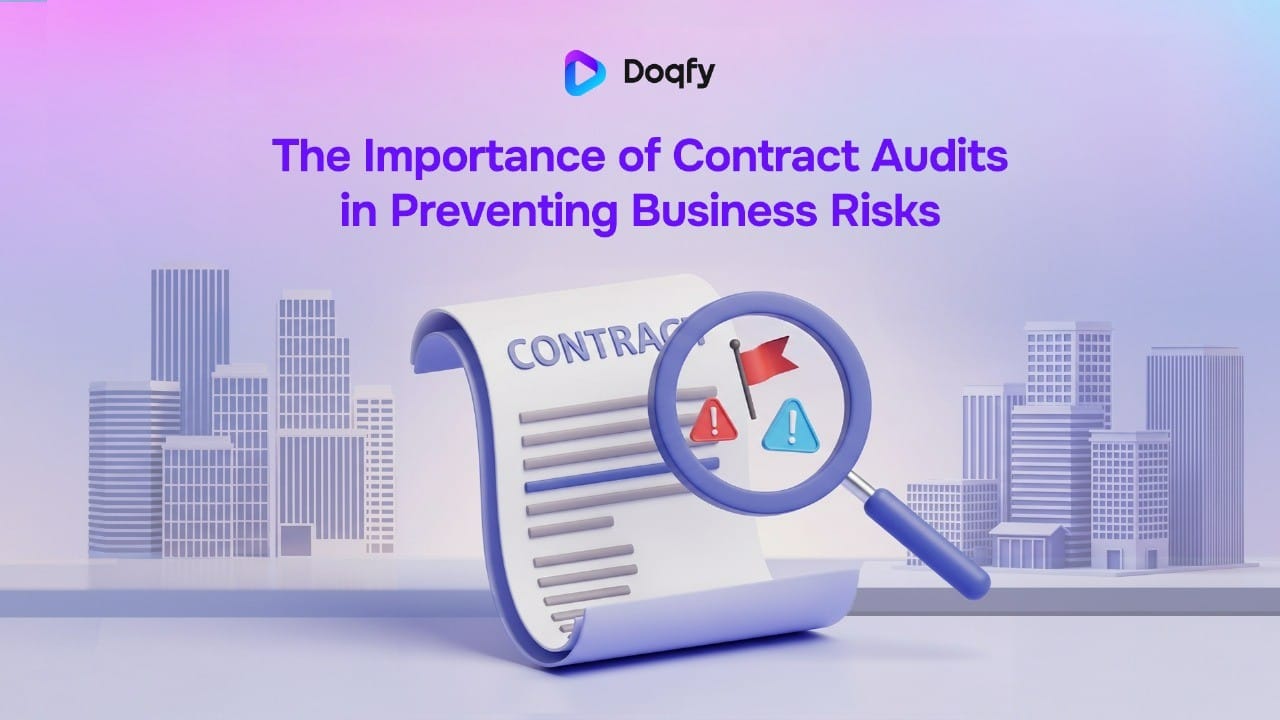The Importance of Contract Audits in Preventing Business Risks: The Fine Print Is a Fault Line
Contracts are often treated as paperwork: Archived once signed, referenced only when something goes wrong.

In a stable environment, a contract is just a record of agreement. But without the right management, that same contract becomes a pressure point.
Contracts are often treated as paperwork: Archived once signed, referenced only when something goes wrong. But when the regulations governing old contracts change, this mindset leaves businesses exposed.
Every clause that governs price, performance, or liability is a load-bearing element. Under routine conditions, it does its job. But when the pressure builds, it’s these clauses that determine whether your business absorbs the shock or feels the break.
Where the Cracks Form
Routine audits are designed to catch small misalignments before they turn into systemic gaps. But most teams still rely on manual spot checks, informal workflows and/or outdated tooling. As a result, they miss common warning signs:
- Outdated rate cards locked in through silent renewals
- One-sided indemnities carried forward from legacy templates
- Contracts missing audit rights or service definitions
- Inconsistent terms across departments and business units
- Clause language that no longer reflects current regulation
These risks are well-documented, high-cost realities businesses have faced in the past due to poor auditing frameworks when operating at scale.
What Happens Without the Checkpoints
Contract risks often don’t show up as urgent issues. They usually sit in the background until something changes. A renewal kicks in with outdated pricing, a compliance check flags an old clause, or a customer points to a service commitment that was never operationalised.
None of this is rare. In fact, some well-known business challenges have stemmed from small misses in how their contracts were managed:
- Volkswagen has paid over €32 billion in settlements and penalties after emissions gaps triggered global lawsuits
- Siemens was fined over $1.6 billion USD for third-party contracting failures
- BP’s Deepwater Horizon liabilities passed $60 billion USD after courts closely reviewed its safety clauses
- Queensland Health’s payroll contract with IBM went from $6 million AUD to $1.25 billion AUD due to due to specification drift and testing shortcuts that good audit discipline would have flagged early
Healthy Audit Hygiene: From Year-End Scrutiny to Everyday Visibility
Audits are often treated as backward-looking exercises. But the best outcomes come when audit thinking is built into the way contracts are created, reviewed, and stored.
That means moving beyond one-off checks and into a system where terms, versions, and risk indicators are visible from day one. When contracts are easy to search, compare, and track, it becomes easier to spot what needs attention, long before a renewal or regulatory review brings it to the surface.
Strong audit hygiene isn’t about volume. It’s about structure. Teams don’t need to review every clause weekly. They need to know where the friction points are likely to show up, and have enough visibility to catch them early.
Key Focus Areas
Leadership doesn’t need a full audit playbook to get started. Just a few focus areas can significantly reduce risk and improve readiness:
- Clear ownership of contracts across departments
- Visibility into clauses tied to pricing, liability, and renewals
- Consistent language and workflows across legal, finance, and procurement
- Triggers or alerts for expired, missing, or off-policy terms
Getting these basics in place builds confidence. Not just for the next audit, but for every negotiation, renewal, or compliance check that follows.
Conclusion: Make Audits Part of the Workflow
When audit steps are built into how contracts are created, reviewed, and managed, you get a clearer picture of where things stand and where attention is needed.
That steady visibility helps organisations stay aligned as they scale, adapt faster when terms need to change, and approach renewals and negotiations with stronger context. It’s a simple shift that supports better decisions across the board.
Explore how Doqfy’s end-to-end CLM can help you stay on top of auditing and version control across contracts at scale. Book a demo today.

